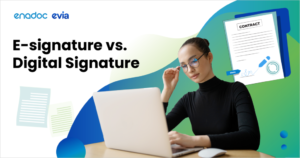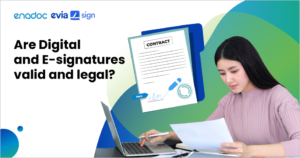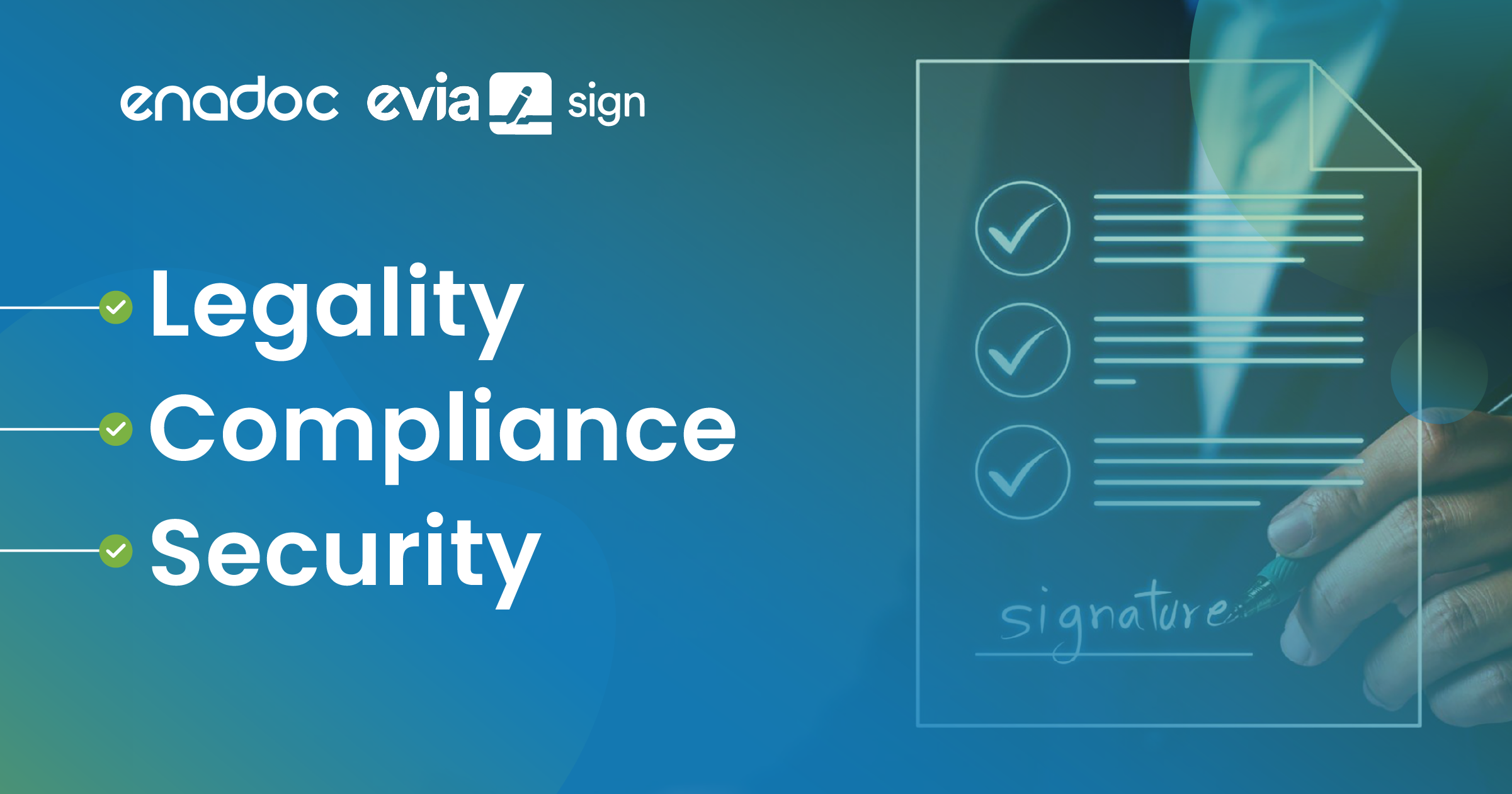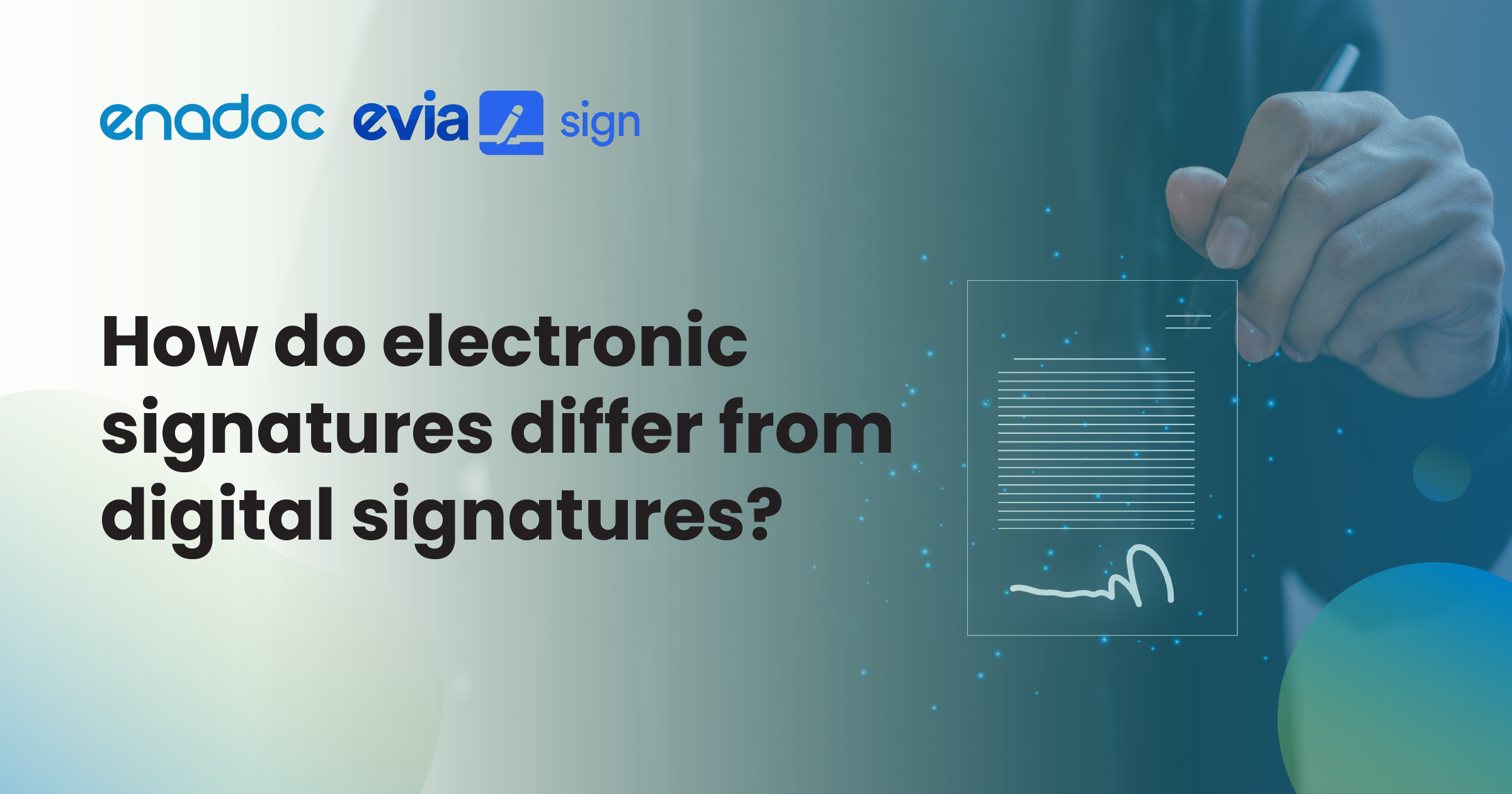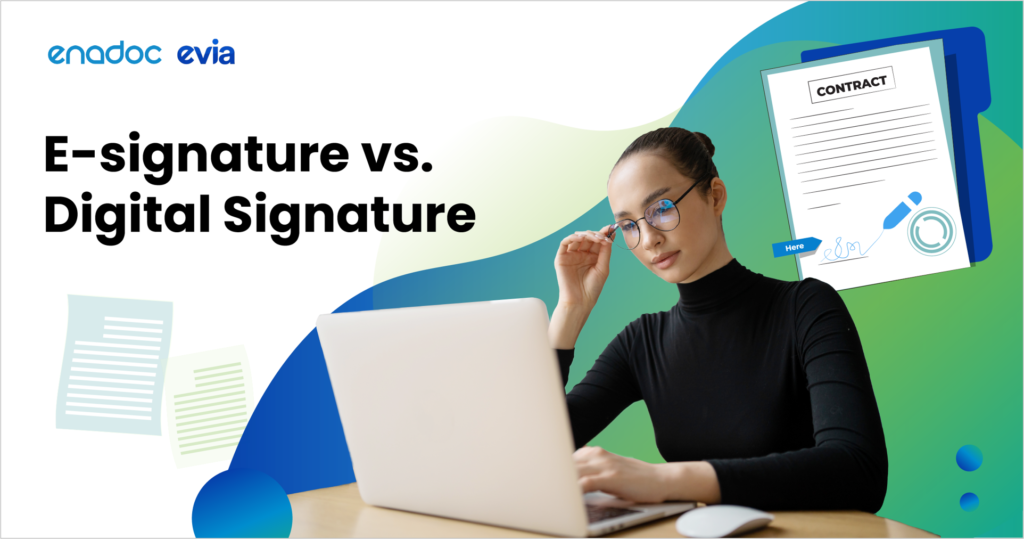
In business, we use “electronic” and “digital” signatures synonymously. However, this may not be correct for all applications. For example, electronic and digital signatures are frequently used in documents as if they are the same thing. Even checking “digital signature” online, expected search results show articles about electronic signatures. But e-signature vs digital signature needs to be defined and used differently.
These two digitally transmitted documents’ signatures are considered legal and valid, following specific implementing rules and regulations. But what are the differences between the two? Before going through the details of these two terms, let’s define them first.
An electronic signature or e-signature is widely accepted all over the world. For example, in the Philippines, the Electronic Commerce Act of 2000 describes e-signature as “any distinctive mark, characteristic and sound in electronic form. It represents a person’s identity and is attached to or logically associated with the electronic data message, document, or any methodology or procedures employed or adopted by a person and executed or adopted by such person. We use it to authenticate or approve an electronic data message or electronic document.”
Usually, this can be in the form of a handwritten signature captured digitally, an “agree” or “disagree” button in a digital format, or even just a typed name at the end of an email.
On the other hand, a digital signature is an encrypted electronic signature authenticated by a credible certification body to prevent document tampering and verify if the document is still valid.
E-Signature vs Digital Signature: What are the main differences?
Authentication
The first and most evident difference between a digital signature and an e-signature is their authentication capabilities. We use e-signatures to verify a document. While a digital signature can authenticate a person signing the record, giving more benefits, especially in legal matters.
Security
E-signatures can be edited on documents. In comparison, digital signatures have more security measures due to the encryptions by the certification authorities. It protects signed copies from possible forgery that could create more problems later. When archived on a cloud platform, digitally signed documents are more secure.
Ease of use
Anyone could just put an e-signature on your behalf with any application available for editing a document. It is easier than having a digital signature requiring a third-party application to do the whole process of signing. On the other hand, Enadoc Evia Sign can make digital signatures easy. You can get documents approved and signed digitally from anywhere and anytime.
What should you prefer?
After comparing “e-signature vs digital signature”, their definitions, and differences, what should you use then? It still depends on you.
But make sure to have a secure, convenient, and compliant way of signing digital documents. With a digital signature solution like Enadoc Evia Sign, you can access, share, edit and sign documents. And this will also ensure the authenticity and validity of your documents.
Know more about Enadoc Evia Sign:
Or email us at lisa@enadoc.com for more details.

